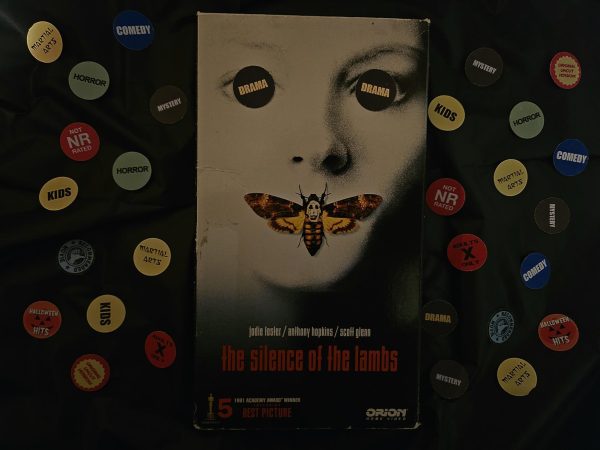Auteur Stanley Kubrick criticized for treatment of Duvall on-set
The seemingly unorthodox methods that made the movie.
A poster of and signed by the infamous twins from The Shining, stored next to a DVD copy of the movie.
Known and accredited as one of the greatest horror films of all time, The Shining (1980), is a psychological horror film produced and directed by critically acclaimed Auteur Stanley Kubrick.
Based on Stephen King’s novel published three years prior to the release of the movie, The Shining happens to be the second book of King’s to be adapted to film; one of the very first in over 60 on-screen adaptations that have since amounted.
The Shining is a telltale story about a very violent case of cabin fever. Jack Torrance is a recovering alcoholic in dire need of a job, having no choice but to turn to Colorado’s Overlook Hotel for a seasonal job as a caretaker. Accompanying him is Wendy Torrance, his wife, and Danny Torrance, their five year old son who has a knack for seeing things that once were and a strong intuition for the future.
Jack just barely receives the job, as the last time a man with a family took over as caretaker of the Overlook for the season went on a violent rampage killing his wife, his two twin daughters, and ultimately himself.
It’s one of many tragedies that have taken place in the Overlook over the years– the building having been built in the early 1900s, and over ‘Indian burial grounds’ no less. The saying “history tends to repeat itself” rings true for The Shining and history certainly repeats itself between Jack Torrance and his family.
Driven mad, Jack attempts to murder Wendy and Danny. Wendy and Danny are able to escape the wrath of Jack just in time and Jack freezes to death in the very blizzard that kept the family entrapped.
With the positive reception that followed King’s very first movie, Carrie (1976), expectations for The Shining were high. Stephen King praised director Brain De Palma’s Carrie, labeling it “far more stylish” than his own novel.
“I’d admired Kubrick for a long time and had great expectations for the project, but I was deeply disappointed in the end result,” King said. “Parts of the film are chilling, charged with a relentlessly claustrophobic terror, but others fall flat. I think there are two basic problems with the movie. First, Kubrick is a very cold man–pragmatic and rational–and he had great difficulty conceiving, even academically, of a supernatural world.”
In the Playboy interview, King goes on to recount his previous discussions with the director; specifically those revolving around religion. “Not that religion has to be involved in horror, but a visceral skeptic such as Kubrick just couldn’t grasp the sheer inhuman evil of the Overlook Hotel,” he said. “So he looked, instead, for evil in the characters and made the film into a domestic tragedy with only vaguely supernatural overtones. That was the basic flaw: Because he couldn’t believe, he couldn’t make the film believable.”
The Shining has found itself under attack time and time again for it’s failure to carry over King’s characterization. Complexity in each of the characters, most notably Jack Torrance, is far and few in between.
On screen, Jack is maniacal; sporting the same deranged grin in the first five minutes of the movie as he does in the last five. Viewers are fed two completely different Jack Torrances from book to film. Novel Jack is a flawed man who wants nothing more to be good and have redemption for his past mistakes.
“The book is about Jack Torrance’s gradual descent into madness through the malign influence of the Overlook, which is like a huge storage battery charged with an evil powerful enough to corrupt all those who come in contact with it. If the guy is nuts to begin with, then the entire tragedy of his downfall is wasted. For that reason the film has no center and no heart,” said King.
The Shining was a result of 56 weeks of shooting, a major contrast to films actress Shelley Duvall, who starred as Wendy Torrance, had previously worked on. The shooting of The Shining was notoriously grueling.
In his career, Kubrick has always been known to strive for perfection. Because of this, many of his on-set methods were incredibly unorthodox.
Dedicated to making the perfect movie, Kubrick demanded countless retakes throughout the shooting. The Shining even found its way into Guinness World Records for the most retakes for one scene with dialogue. A scene involving characters Dick Hallorann and Danny Torrance discussing their mutual ability to “shine” was retaken a total of 148 times.
In an interview with The Hollywood Reporter Duvall recalled her days spent on set. “[Kubrick] doesn’t print anything until at least the 35th take. Thirty-five takes, running and crying and carrying a little boy, it gets hard. And full performance from the first rehearsal. That’s difficult.”
“Or you just think about something very sad in your life or how much you miss your family or friends. But after a while, your body rebels. It says: ‘Stop doing this to me. I don’t want to cry every day.’ And sometimes just that thought alone would make me cry.
To wake up on a Monday morning, so early, and realize that you had to cry all day because it was scheduled — I would just start crying. I’d be like, ‘Oh no, I can’t, I can’t.’ And yet I did it. I don’t know how I did it. Jack said that to me, too. He said, ‘I don’t know how you do it.’ ”
The shooting was extremely tolling on the entire cast but Shelley Duvall was hit the hardest. According to Jack Nicholson, starring as Jack Torrance in the film, Kubrick was a completely different director around Duvall.
Kubrick’s daughter herself has acknowledged the horrifying treatment of the actress. Kubrick demanded that the crowd not show any sympathy for Duvall and would often ask that they just ignore her.
She received no compliments or praise on set, while Nicholson was frequently commended by the director. At one point, Duvall was “in and out of health”, and according to Nicholson, began to lose her hair.
After a scene requiring 127 retakes, Duvall suffered from wounds on her hand and severe dehydration. Kubrick’s treatment was cold and cruel, but not without intention; the auteur was dedicated to pushing Duvall into that very same headspace as Wendy Torrance.
“She actually carried the movie on her back if you look at it,” said Anjelica Huston, Nicholson’s girlfriend at the time. “Jack wavers between sort of comedic and terrifying, and Kubrick was Kubrick at his most mysterious, interesting and powerful. But it must have been something for her to be in the middle of that mix. And she took it on. She was, I think, incredibly brave.”
As unorthodox as Kubrick’s methods may have been, they undoubtedly reflected on screen and created a film so great that it has been chosen for preservation in the United States National Film Registry by the Library of Congress for being “culturally, historically, or aesthetically significant”. The Shining’s reputation has amassed a large following over the last two decades, a surprising turnaround from it’s mixed release.
David Tracewell, fan of The Shining, recounts his favorite scene. “I just think any hallway scene, because you’re always wondering what’s going to happen next.” He said.
“Somebody’s got to be the first to do certain things, and Kubrick wasn’t literally the first but a lot of the stuff you see on there you see other directors mimic now. I love the quiet scenes. That’s the part that scares you more.”
Stanley Kubrick certainly participated in cinematographic practices previously unseen, like the Steadicam mount used to film many scenes throughout the movie.
As for Duvall, though her days on set were tough, she still holds no ill will towards Kubrick. In fact, the actress still recounts memories of the auteur being “warm and friendly” with her off-set, and he would often want to spend hours chatting with Duvall and Nicholson.
The actress hasn’t been in the spotlight for awhile now, but she still gets a bit emotional watching The Shining. “Every day. It was very hard. Jack was so good — so damn scary. I can only imagine how many women go through this kind of thing.”












